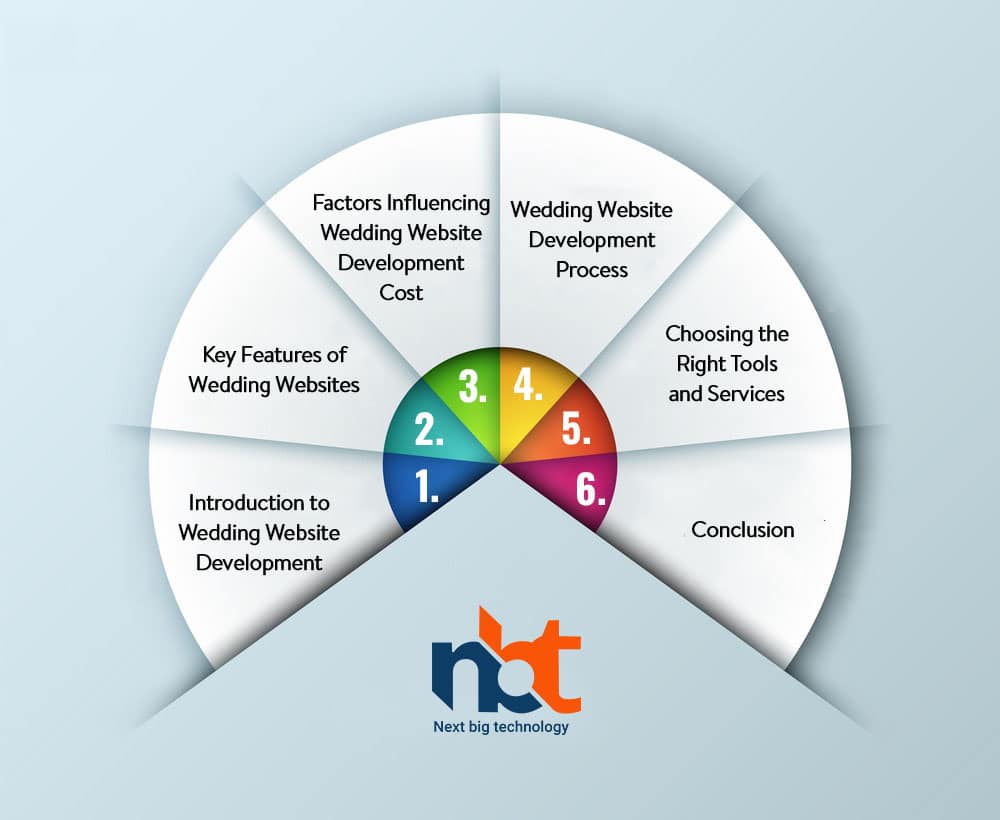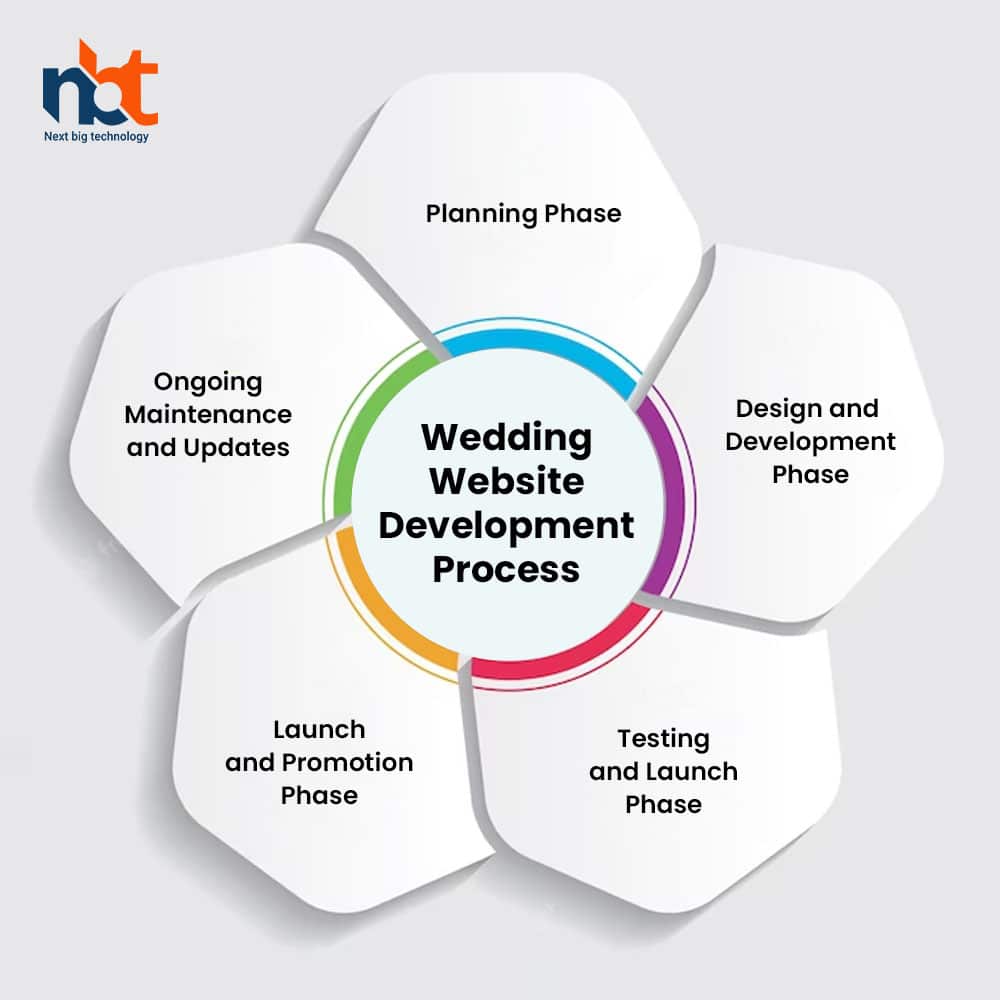In the modern era, wedding websites have become an essential part of wedding planning, offering couples an efficient and creative way to share their love story, important details, and engage with their guests. These websites serve as a virtual hub for wedding information, RSVP management, and communication. This comprehensive guide explores the key features, cost considerations, and step-by-step process involved in developing a personalized and memorable wedding website.
Table of Contents
Introduction to Wedding Website Development
- Understanding Wedding Websites: Defining the role of online platforms in modern wedding planning.
- Significance of Wedding Websites: Enhancing communication, personalization, and guest engagement.
Key Features of Wedding Websites
Love Story Presentation:
- About Us: Sharing the couple’s story, including how they met and their journey.
- Photo Galleries: Displaying engagement photos, milestones, and memorable moments.
- Timeline: Creating a visual timeline of the couple’s relationship.
Event Information:
- Wedding Details: Providing date, time, location, and venue information.
- RSVP Management: Allowing guests to RSVP online and manage their attendance.
- Accommodation: Offering details about recommended hotels and accommodations.
Guest Communication:
- Guestbook: Enabling guests to leave messages, well wishes, and comments.
- Contact Information: Displaying contact details for inquiries and assistance.
- FAQ Section: Addressing common questions about the wedding.
Registry and Gifts:
- Gift Registry: Sharing links to wedding registries for convenient gift selection.
- Charitable Donations: Providing options for guests to donate to a chosen charity.
- Thank You Notes: Sending digital thank-you messages to guests after the wedding.
Countdown and Reminders:
- Countdown Timer: Building excitement by displaying days until the wedding.
- Important Dates: Reminding guests of RSVP deadlines, rehearsal timings, etc.
- Weather Updates: Integrating weather forecasts for the wedding day.
Design and Personalization:
- Themes and Color Schemes: Choosing design elements that match the wedding’s aesthetic.
- Customization: Offering flexibility to personalize fonts, backgrounds, and layouts.
- Monogram: Incorporating a personalized monogram or logo for the couple.
Mobile Compatibility:
- Responsive Design: Ensuring the website is functional and appealing on mobile devices.
- Mobile App Integration: Providing options for guests to access the website through a dedicated app.

Factors Influencing Wedding Website Development Cost
- Functionality and Complexity: The extent of features such as RSVP management, gift registries, and personalization.
- Design and User Experience: Creating an intuitive and visually pleasing interface for guests.
- Content Volume: Developing comprehensive content, including love stories, event details, and FAQs.
- Custom Development: Adding unique features or integrations to match the wedding’s theme.
- E-commerce Integration: Incorporating links to registries, donation platforms, or ticket sales.
- Mobile Responsiveness: Ensuring the website functions seamlessly on various mobile devices.
- Ongoing Maintenance: Regular updates, security checks, and technical support.
Wedding Website Development Process
1. Planning Phase
- Determine Website Goals: Identify the primary purpose of the website (e.g., sharing information, RSVP management).
- Content Strategy: Plan the content categories, such as love story, event details, and guestbook.
- Design and Personalization: Decide on the design elements that align with the wedding theme.
- Technology Selection: Choose a content management system (CMS) or development platform.
2. Design and Development Phase
- User Experience Design: Design a user-friendly interface that reflects the couple’s style and personality.
- Content Creation: Develop engaging and informative content for each section of the website.
- RSVP and Guest Management: Implement tools for managing guest responses and attendance.
- Mobile Optimization: Ensure responsive design and optimal performance on mobile devices.

3. Testing and Launch Phase
- Quality Assurance: Test RSVP forms, guestbook entries, and interactive features.
- User Testing: Invite friends or family members to navigate the website and provide feedback.
- Mobile Testing: Ensure the website functions smoothly on various mobile devices.
- Security Checks: Implement security measures to protect guest data and prevent spam.
4. Launch and Promotion Phase
- Final Deployment: Upload the website to the chosen hosting server.
- Promotion Strategy: Share the website link with wedding invitations and on social media.
- Guest Engagement: Encourage guests to RSVP, sign the guestbook, and explore the website.
- Analytics Setup: Implement tracking tools to monitor website traffic, engagement, and user behavior.
5. Ongoing Maintenance and Updates
- Regular Content Updates: Keep the website updated with any changes in event details.
- Technical Support: Address technical issues and guest inquiries promptly.
- Performance Optimization: Regularly optimize website speed and loading times.
- Security Measures: Implement regular updates and security patches.
6. Choosing the Right Tools and Services
- Content Management Systems (CMS): Explore options like WordPress, Squarespace, or Wix.
- RSVP and Guest Management Tools: Utilize RSVPify, Joy, or custom solutions.
- Design and Customization Tools: Use graphic design software and website builders for personalized touches.
- Gift Registry Integration: Include links to popular wedding registry platforms.
- Mobile App Development: Consider developing a dedicated mobile app for easy access.
Conclusion
A wedding website adds a touch of modernity and convenience to the wedding planning process, enhancing the couple’s connection with their guests. The features you incorporate, the design complexity, and the ongoing maintenance efforts all contribute to the overall cost. By following a structured development process,









